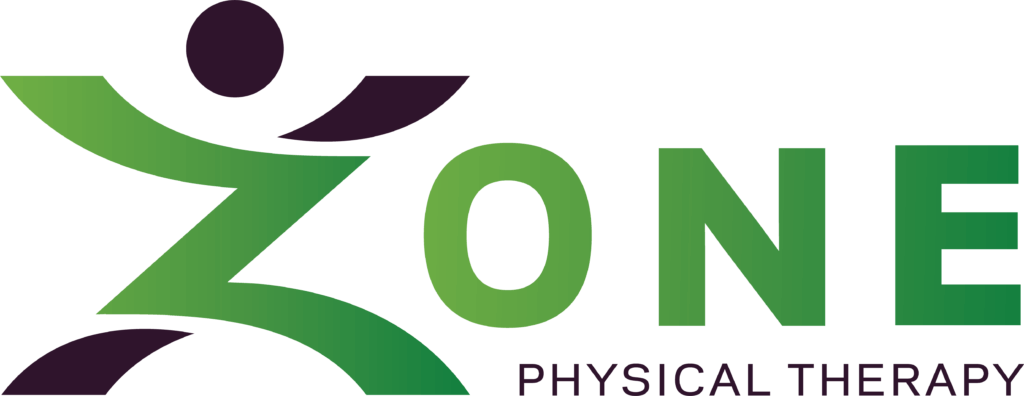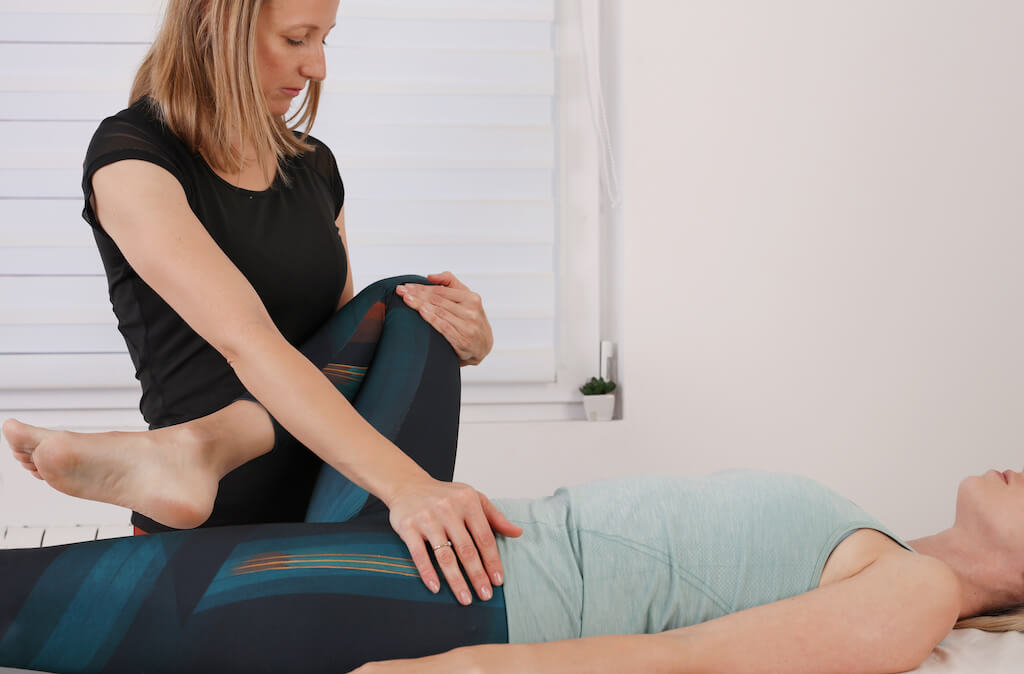Your pelvic floor goes through an immense amount of stress during pregnancy and childbirth and yet here in the United States typical postpartum care includes only one 6-week check up with your OBGYN. The benefits of pelvic floor physical therapy are well documented and in many European countries, it is part of routine postpartum care.
Many new moms do not even know what physical therapy for pelvic floor is and what it can help treat. I believe that every new mom should know about all the benefits of pelvic floor physical therapy postpartum.
Taking care of a new born baby is hard, so as new moms it is easy to put our own body’s recovery on the back burner. You may notice a lot of different things about your body after having a baby and it can be hard to know what is normal, what is not, and what you can do to feel your best.
Thankfully, there are many common uncomfortable postpartum symptoms that can be successfully treated with pelvic floor physical therapy.
Benefits of Pelvic Floor Physical Therapy #1 – Improved Pelvic Floor Muscle Strength
The first major benefit of pelvic floor physical therapy postpartum is improved pelvic floor muscle strength which reduces back pain, pelvic pain and incontinence.
I do not think anyone would argue that the pelvic floor muscles are stretched during pregnancy and childbirth. And when muscles are stretched for long periods of time it affects how they function.
Pelvic floor muscles need to be able to both contract and relax symmetrically throughout their full range of motion to provide proper support, and when they aren’t fully functioning, problems start to appear.
Postural Restoration® physical therapy can help restore normal symmetry and muscle tone to the pelvis and pelvic floor muscles to improve its overall function. Pelvic floor physical therapy has also been shown to increase pelvic floor muscle strength during the postpartum period. (1)
This can also help to improve any other symptoms brought on by a lack of pelvic floor muscle function.
Benefits of Pelvic Floor Physical Therapy #2 – Decreased Urinary Incontinence (leaking urine)
Do you feel like you need to cross your legs tight or run to the bathroom every time you cough or sneeze?
Do you avoid jumping on a trampoline, jumping jacks, or running because of the fear of leaking urine?
There is help for this!
Many studies have shown that pelvic floor physical therapy postpartum reduces urinary incontinence in postpartum women. (1,3)
I have heard so many women struggling with incontinence that just thought they had to live with it, and I want every woman to know that they don’t have to. This is often one of the most valued benefits of pelvic floor physical therapy and can make a massive difference to new moms after pregnancy.
Benefits of Pelvic Floor Physical Therapy #3 – Decreased Pelvic Organ Prolapse
Pelvic organ prolapse is when the tissues that support your pelvic organs are weakened or stretched and can allow those organs to bulge into the vagina.
One study showed that up to 43% of women had some degree of pelvic organ prolapse 6 weeks after childbirth. (5)
Now some women can have mild prolapse without any symptoms at all, but others may have symptoms including pressure, sensitivity, or incontinence.
And thankfully studies also show that pelvic floor physical therapy postpartum improves both prolapse symptoms and severity. (2)
Benefits of Pelvic Floor Physical Therapy #4 – Decreased Fecal Incontinence
Fecal incontinence is when you cannot fully control your bowel movements and have some amount of leaking stool.
This is less common than urinary incontinence after childbirth but still a prevalent problem for some women.
A study has shown that physical therapy for pelvic floor decreased the risk of fecal incontinence by 50% at one year postpartum, which is great!
So, there is no need to feel ashamed or suffer if you do experience any sort of incontinence.
Benefits of Pelvic Floor Physical Therapy #5 – Improved Sexual Function
The final benefit of pelvic floor physical therapy is another lesser discussed postpartum topic; sexual function.
Generally, at your 6-week follow up your OBGYN assesses your healing and gives you the go ahead if everything looks good.
This does not mean that everything feels good (or that you even want to, which is OK too!).
But when you are ready to have sex after having a baby it should not be painful – and pelvic physical therapy can help with that too.
Studies have shown that pelvic floor physical therapy can have a positive effect on overall sexual function postpartum. (4[s1] )
Pregnancy and childbirth are difficult both mentally and physically.
It is just as important to take care of mom after delivery as it is to take care of baby.
Pelvic floor physical therapy is an important part of recovery that every new mom should know about and have access to.
How To Strengthen Your Pelvic Floor Postpartum
Zone Physical Therapy would love to be part of your postpartum journey and we are currently offering a limited number of free Pelvic Floor Pain Assessments.
In our clinic, we are experiencing extremely high demand for pelvic floor physical therapy as more and more patients put their faith in natural pain relief and solutions to common postpartum problems such as incontinence, painful sex, and muscular aches.
Our team have helped hundreds of moms, just like you, improve their pelvic health and we would love to help you!
To arrange your free Pelvic Floor Pain Assessments – Request An Appointment or call us on (864) 351-7254.
Other Resources For Better Pelvic Health:
Read our blog – Do You Pee When You Jump, Cough, or Sneeze? Try These Tips!
Learn more about Pelvic Floor Physical Therapy – Pelvic Floor Physical Therapy Greenville, SC
Follow us on social media – Zone Physical Therapy Instagram
References:
- Lori Barrios, PT, DPT
- Mørkved, S., Bø, K. The effect of postpartum pelvic floor muscle exercise in the prevention and treatment of urinary incontinence. Int Urogynecol J 8, 217–222 (1997). https://doi.org/10.1007/BF02765817
- Li, C., Gong, Y. & Wang, B. The efficacy of pelvic floor muscle training for pelvic organ prolapse: a systematic review and meta-analysis. Int Urogynecol J 27, 981–992 (2016). https://doi.org/10.1007/s00192-015-2846-y
- Hay‐Smith J, Mørkved S, Fairbrother KA, Herbison GP. Pelvic floor muscle training for prevention and treatment of urinary and faecal incontinence in antenatal and postnatal women. Cochrane Database of Systematic Reviews 2008, Issue 4. Art. No.: CD007471. DOI: 10.1002/14651858.CD007471.
- CITAK, N., CAM, C., ARSLAN, H., KARATEKE, A., TUG, N., AYAZ, R. and CELIK, C. (2010), Postpartum sexual function of women and the effects of early pelvic floor muscle exercises. Acta Obstetricia et Gynecologica Scandinavica, 89: 817-822. doi:10.3109/00016341003801623
- Eddie H.M Sze, Gordon B Sherard, Jeanette M Dolezal, Pregnancy, labor, delivery, and pelvic organ prolapse. Obstetrics & Gynecology, Volume 100, Issue 5, Part 1, 2002, Pages 981-986, ISSN 0029-7844, https://doi.org/10.1016/S0029-7844(02)02246-9.
Tags: pelvic floor


